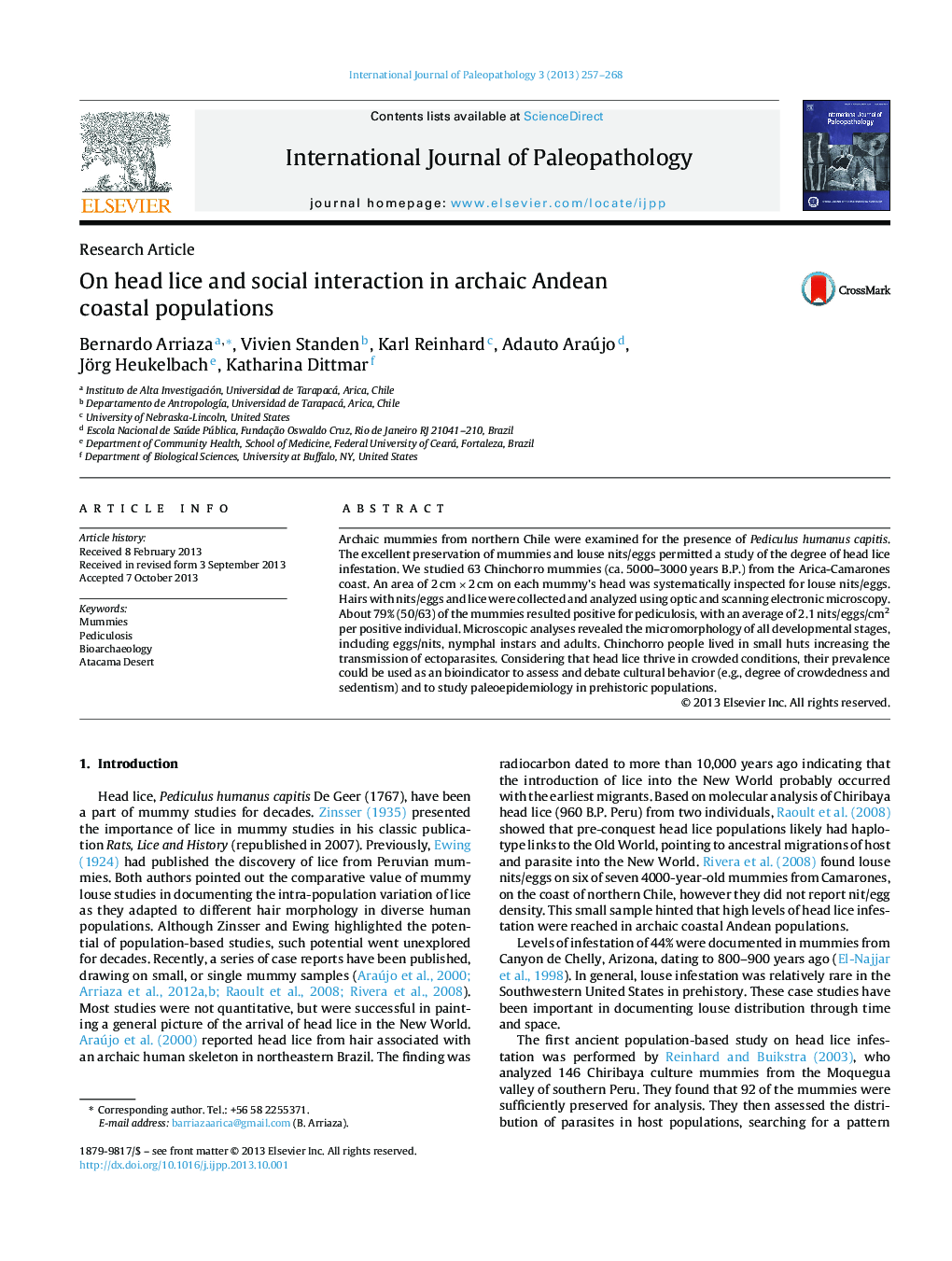| Article ID | Journal | Published Year | Pages | File Type |
|---|---|---|---|---|
| 101391 | International Journal of Paleopathology | 2013 | 12 Pages |
•We studied 63 Chinchorro mummies from Arica, Chile, searching for evidence of Pediculosis.•Excellent preservation of mummies permitted statistical analyses of the degree of head lice infestation.•Pediculus humanus capitis was common among ancient Andean fishers and hunter-gatherers that lived around 5000–3000 years B.P.
Archaic mummies from northern Chile were examined for the presence of Pediculus humanus capitis. The excellent preservation of mummies and louse nits/eggs permitted a study of the degree of head lice infestation. We studied 63 Chinchorro mummies (ca. 5000–3000 years B.P.) from the Arica-Camarones coast. An area of 2 cm × 2 cm on each mummy's head was systematically inspected for louse nits/eggs. Hairs with nits/eggs and lice were collected and analyzed using optic and scanning electronic microscopy. About 79% (50/63) of the mummies resulted positive for pediculosis, with an average of 2.1 nits/eggs/cm2 per positive individual. Microscopic analyses revealed the micromorphology of all developmental stages, including eggs/nits, nymphal instars and adults. Chinchorro people lived in small huts increasing the transmission of ectoparasites. Considering that head lice thrive in crowded conditions, their prevalence could be used as an bioindicator to assess and debate cultural behavior (e.g., degree of crowdedness and sedentism) and to study paleoepidemiology in prehistoric populations.
Graphical abstractHair of an Andean coastal mummy showing severe head lice infestation with hatched, unhatched and hatching eggs. Magnification 71×. Measurements of length (Pa1) and width (Pa2) of the louse egg indicated.Figure optionsDownload full-size imageDownload as PowerPoint slide
